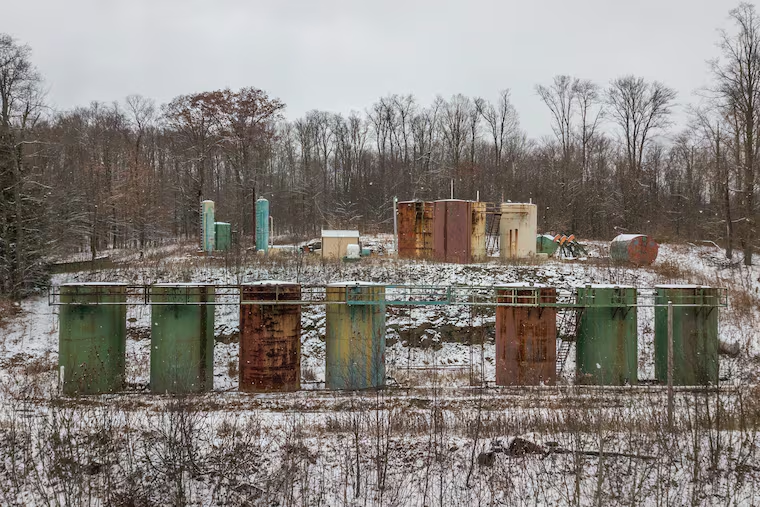Unused oil and gas wells in Pennsylvania must be plugged
The solution to the problem of orphaned and abandoned wells is multifaceted, but it depends on public awareness and participation.

The American oil and gas industry started in Pennsylvania. Our state is also home to an estimated 27,000 documented orphaned or abandoned oil and gas wells. These wells were drilled decades ago when regulations were less stringent or nonexistent, and many were never correctly plugged. As a result, they pose a severe threat to the environment and to public health.
Orphaned wells are idle wells that the commonwealth has verified as not having an operator. Abandoned wells are also inactive, but may still have a responsible party (although it’s unlikely that party will take responsibility to clean them up).
As with any structure constructed with steel and concrete, these wells, which have been exposed to the elements and haven’t been maintained for several decades, are decaying and falling apart. They can leak oil and brine, potentially contaminating the soil, groundwater, and surface water. They also can, and often do, release methane, a potent and explosive greenhouse gas.
Orphaned and abandoned wells are not confined to the rural areas of Pennsylvania. According to the Pennsylvania Department of Environmental Protection’s Office of Oil and Gas Management’s inventory of orphaned and abandoned wells, 47 of the commonwealth’s 67 counties have at least one orphaned or abandoned oil or gas well. Eight of Pennsylvania’s top 20 most populated counties are on this list, including Allegheny, Butler, Erie, Lackawanna, Luzerne, Washington, Westmoreland, and York.
Hydrocarbons are organic compounds that contain hydrogen and carbon. These compounds are highly combustible and are the main source of energy in the world, used in gasoline, propane, kerosene, jet fuel, and diesel.
In Pennsylvania, wells were drilled where the hydrocarbons were at the time. Population growth followed. Without rules or regulations, oil and gas wells were allowed to be left without proper decommissioning. Homes were permitted to be built with little regard to potential hazards underground.
Times have changed, and now modern regulations govern the oil and gas industry. But the problems from the oil and gas era before those regulations persist.
To be sure, the problem of orphaned and abandoned wells is not new, and certainly not limited to Pennsylvania. How we got here is a long story involving many parties. It’s time to get serious about solving this widespread and, until recently, little-publicized problem. It will take all of us to get involved in making a difference for future generations of Pennsylvanians.
The Commonwealth of Pennsylvania has a program to plug orphaned and abandoned wells using funds allocated in the Department of Environmental Protection’s annual budget. Still, it is underfunded, with a decades-long backlog of work.
The federal Infrastructure Investment and Jobs Act can provide approximately $400 million to Pennsylvania over the next 10 years to plug orphaned and abandoned wells. At an average cost of $100,000 per well to plug, this funding may cover 4,000 wells. This is a good starting point, but still leaves more than 20,000 wells unaddressed. We must consider alternative funding sources and mechanisms to complete this vital work.
The Well Done Foundation, a national nonprofit organization where I serve as vice president, has adopted and plugged 26 wells nationwide, including three in Pennsylvania, using private philanthropic funding. The voluntary carbon credit market — a system for buying and selling carbon credits, which enable entities that emit greenhouse gasses to fund projects that reduce other sources of those pollutants — provides additional funding to private parties to plug even more wells.
Even if we had unlimited financial resources in the public and private sectors, working through Pennsylvania’s well-plugging backlog would still take decades. There aren’t enough crews or equipment to go around. Plugging any oil and gas well involves heavy machinery, hard physical work in often very demanding conditions, and on-the-job training.
The solution to the problem of orphaned and abandoned wells is multifaceted, but it depends on public awareness and participation.
Let’s ensure that our elected leaders and regulatory agencies develop and strengthen programs and policies to prevent currently operating wells from becoming abandoned and eventually orphaned. We must demand that public funds used to plug wells are spent wisely. Private endeavors need to be encouraged. We must better support trades education to build the necessary workforce and equipment to do this job correctly.
It’s a daunting task, but we can make things better. We are improving the environment and enhancing the safety of Pennsylvanians with every well we plug. Let’s get to work plugging thousands of wells, one well at a time.
Amanda Veazey is the vice president of eastern operations at the Well Done Foundation.